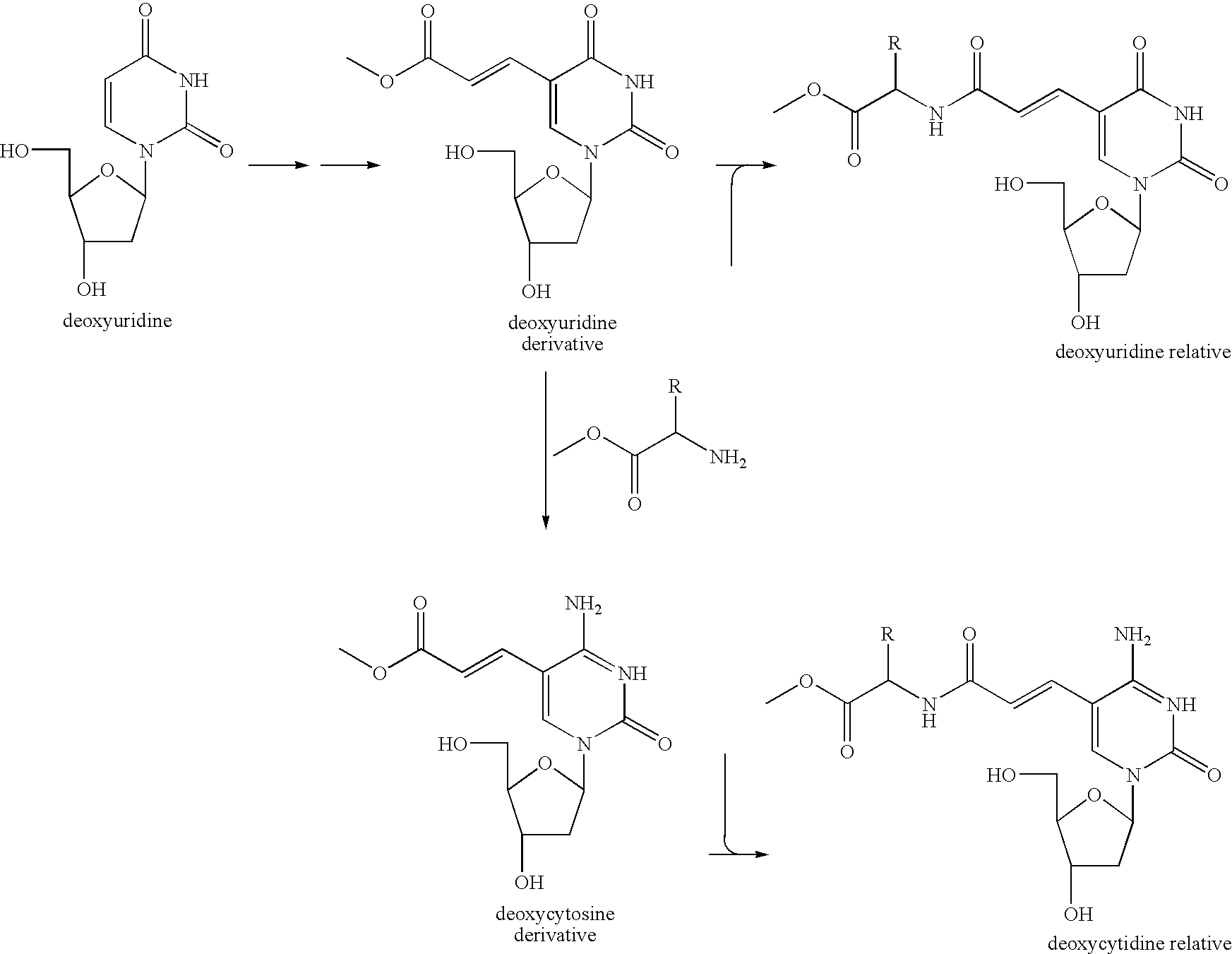Functional molecule and process for producing the same
a technology of functional molecules and molecule, applied in the field of functional molecules, can solve the problems of inability to improve, require a large amount of protein, and no process effective for obtaining the molecule used for protein analysis, and achieve the effect of producing effectively and integrally
- Summary
- Abstract
- Description
- Claims
- Application Information
AI Technical Summary
Benefits of technology
Problems solved by technology
Method used
Image
Examples
example 1
[0124] In the way shown in FIGS. 3A to 3D, producing (synthesis and identification) the functional molecule having an affinity to a specific protein was operated. Specifically, first, by the process expressed by the following formula, 6 kinds of deoxycytidine relatives (C1-6) having a functional group at the 5th position of cytosine and 6 kinds of deoxyuridine relatives (U1-6) having a functional group at the 5th position of uracil were each synthesized (prepared).
[0125] Next, each of the synthesized (prepared) 12 kinds of the modified nucleoside dimer was one-to-one related to any one selected from 16 patterns of the relation table represented in the following Table 1. The relation table was prepared by combining one-to-one the 4 nucleosides composing the DNA.
TABLE 1relation table5′3′ACGTAC2AU3ACAC1C3CGC6U4CGC4GU5GTAU1C5TGU2U6T
[0126] Next, by the phosphoroamidite method, 12 kinds of the modified oligonucleotide amidite (M) represented in the relation table in the above Table 1 ...
example 2
[0134] As a random polymer pool containing the modified oligonucleotide sequence, a 5′-32P radiolabeled standard (that prepared by previously labeling a nucleotide monomer containing a modified base by a radioactive element) of the DNA random pool (total amount 20 OD) [nucleotide fixed sequence 20-mer DNA (N20)] synthesized in Example 1 was prepared.
[0135] The step described above is the step of producing the modified oligonucleotide sequence.
[0136] On the other hand, a cytoplasm fraction was purified from a rat liver tissue in the usual manner. A protein mixture contained in this fraction was subjected to linear isoelectric focusing (pH 4 to 7) in the usual manner followed by SDS-PAGE as two-dimensional electrophoresis. Following the electrophoresis, the protein contained in the protein mixture was blotted on a nitrocellulose membrane by the western blotting method.
[0137] The nitrocellulose membrane, on which the protein mixture was immobilized, was soaked in a diluted solution ...
PUM
| Property | Measurement | Unit |
|---|---|---|
| Length | aaaaa | aaaaa |
| Electric potential / voltage | aaaaa | aaaaa |
| Affinity | aaaaa | aaaaa |
Abstract
Description
Claims
Application Information
 Login to View More
Login to View More - R&D
- Intellectual Property
- Life Sciences
- Materials
- Tech Scout
- Unparalleled Data Quality
- Higher Quality Content
- 60% Fewer Hallucinations
Browse by: Latest US Patents, China's latest patents, Technical Efficacy Thesaurus, Application Domain, Technology Topic, Popular Technical Reports.
© 2025 PatSnap. All rights reserved.Legal|Privacy policy|Modern Slavery Act Transparency Statement|Sitemap|About US| Contact US: help@patsnap.com



